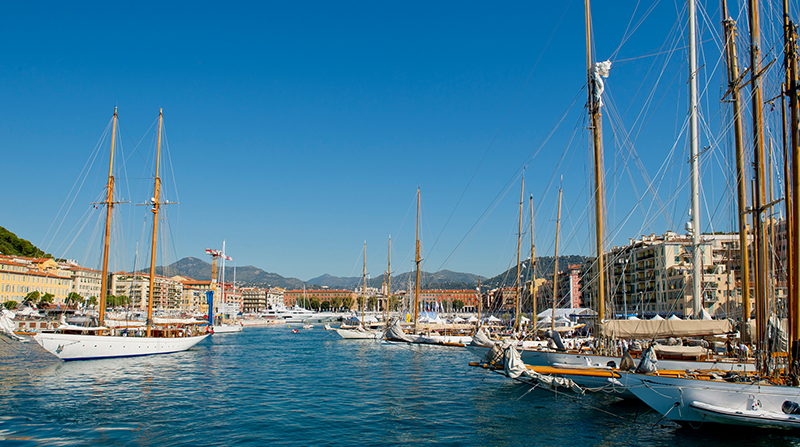

Port of Nice, Photo Credit: A.ISSOCK
Spanning 75 miles of sun-kissed coastline in the South of France, the French Riviera, or the Côte d’Azur, inspired the likes of Monet, Picasso, Matisse and Cézanne. The revered artists found beauty in the cobalt waters, the pastel-hued buildings and the ever-present sun.
Before you organize your own trip to colorful, picturesque towns like St. Tropez, Cannes, Nice, Grasse and Menton, here are some things you should know.

Carnival, Photo Credit Alexandre Chailan
The best time to visit the French Rivera
It’s hard to say there’s a bad time to visit a place as lovely as the French Riviera, but there are definitely some months that are more popular than others.
With striking (though a bit rocky) beaches stretching along the coast from Monaco to St. Tropez, this is the place to soak up the Mediterranean sun come summertime. And it’s definitely the summer escape of choice among the French.
Of course, because the French Riviera is such an in-demand destination between May and August, you’ll find that the hotels and restaurants are generally quite crowded. But with those crowds come plenty of parties — in mid-May, film stars flock to the Cannes Film Festival, while late May brings the crème de la crème to Monaco for the Grand Prix.
Winter is a bit calmer, but it’s great for those looking for a quiet romantic getaway. However, many hotels close from November to March, so check on that beforehand. In February, Nice celebrates Carnival, which is always fun.
Should visitors rent a car in the French Riviera?
If you plan on concentrating your visit on a single town, there really isn’t a need to rent a car. For example, if you’re staying in Nice or Cannes, both towns are pedestrian friendly and traffic is notoriously bad. You can also easily hop on a train or bus to a nearby village for sightseeing.
However, if you want to take any excursions or spread your visit among several areas, a rental will be necessary.
Another option: Uber also operates throughout most of the French Riviera and into Monaco (but not the other way around) and is much faster than waiting at a taxi stand.
What to know before visiting the French Riviera
If you’re coming to Cote d’Azur to hit the sand and surf, just keep in mind that most of the private beaches close down come October or November until the warmer weather returns.
There are about 30 waterfront spots that stay open year-round, including Plage Beau Rivage along the Promenade des Anglais in Nice and L’Ecrin and Plage Goeland on the Boulevard de la Croisette in Cannes.
Also note that though most department stores and grocery shops stay open, smaller markets and boutiques typically close on Sundays. The same goes for restaurants, which may also be closed on Mondays.
Museums throughout France also usually shutter their doors on Mondays or Tuesdays. Be sure to call ahead before heading out.
